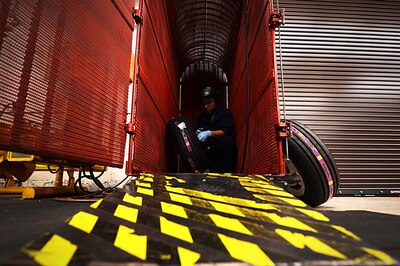By Air Force Tech. Sgt. Benjamin Stratton, 35th Fighter Wing
MISAWA AIR BASE, Japan, March 2, 2018 — An intelligence
analyst by day and cultural envoy by night, Air Force Master Sgt. Cesar “Vinny”
Ventura grew up as one of four bilingual siblings in a Hispanic immigrant
family in Los Angeles, California.
"Mijo, can you come tell me what they're saying to
me?" his mom would ask in Spanish.
His parents didn't speak English, so they relied on Vinny
and his brothers to translate for them while running errands around town.
"Sí," he'd respond. "They said, 'Thank
you!'"
Those trips around town taught him the importance of
understanding intercultural communication. He spent a lot of time exploring
comics and graphic novels for the easy reading and eventually discovered anime
in high school.
"I liked it [anime] so much I wanted to watch it
without the subtitles, so I just learned Japanese," he said. "Today,
every country I visit, I learn the basics of their language and culture, so I
can really connect with them according to their communication preferences."
Lifelong Preparation
Ventura said his whole life, from his childhood in Los
Angeles to a brief stint in the Navy from 1997-2001, and then enlisting in the
Air Force in 2003, prepared him for his assignment here. He's built
partnerships with complete strangers, many of whom have become like family.
He now serves as a vertical inspections planner with the
35th Fighter Wing's inspector general's office. In this capacity, he organizes,
trains and oversees the wing inspector general's inspection team. It's not this
job, though, that earned him respect among his Japanese counterparts.
The Misawa veteran dedicated hundreds of hours forging
friendships and strengthening the U.S.-Japan security alliance over the past
four years with airmen with the Japan Air Self-Defense Force’s 3rd Air Wing,
earning him the Special Class Award from the JASDF Area Defense Command, Dec.
13.
"His contributions to our bilateral relationship far
exceed anything Misawa-specific-he's made an impact on the entirety of the Area
Defense Command and our nation," said JASDF Warrant Officer Tsuyoshi Endo,
former 6th Air Defense Missile Group chief and former Senior Noncommissioned
Officer Association president.
From planning bilateral dining-outs and tug-of-war
competitions to helping JASDF Airmen win English language competitions in
Tokyo, Ventura's deep understanding of his host nation's language and culture
cemented relationships and netted him two lifelong friends.
Building a Family
"Vinny-san is like family to me," said JASDF
Warrant Officer Junji Miura, the 3rd Air Wing command chief. "He's part of
our inner circle. He always tells us, 'If you ever need anything, just ask,'
and that same sentiment is absolutely true for us. He can call us at any time,
day or night, and we'll be there for him."
Miura and Endo hold Ventura in such high regard he's met
their spouses, and their spouses have met his wife. He's even cooked his
favorite Italian dish for them.
"It was delicious!" Miura said. "He really
can cook!"
The two warrant officers aren't the only Japanese he's
developed close friendships with at Misawa. There are many similar stories, all
leading back to his dedication to enhancing quality of life initiatives and
resiliency for airmen.
"I like to see and experience other countries’
militaries and how they operate," he explained. "Learning their
language is a key part to that experience. My intelligence analyst training
made it easier and helped me better decipher the intricacies of each language
I've encountered."
Ventura likened it to self-aid buddy care training where
airmen learn basic medical combat survival skills.
"We do it so often in preparation for the real deal
that now it just comes so natural," he said. "Language is the same
way. When it comes to understanding language and culture, you really can't have
one without the other; it's better for both sides if we embrace both as
one."
Constant Learning
Not only can Ventura speak Japanese fluently, but he's also
learned some 400 of the roughly 1,200 kanji characters in the Japanese writing
system.
"I pick up something new every time I go off base or
interact with my Japanese friends," he said.
One friend, Noriko Ohtani, who works in the U.S. Relations
Section at the 3rd Air Wing, said Vinny is her 911 emergency contact,
"Always!"
"When I first came to Misawa, I had never worked with
the Ministry of Defense," she said. "It scared me, really, honestly,
but after talking with Vinny-san, he helped me realize I didn't need to be scared.
I felt comfortable talking with other military members from that day
forward."
Thanks to Ventura, Ohtani said, she's been successful in her
position here and been able to build really strong relations with other U.S.
service members.
"I'm just so thankful we met," she added.
With a tearful grin, Endo echoed Ohtani's sentiment saying,
"I'm super, super, super … appreciative of everything Vinny-san has done
for me, my family and my airmen. Even after I retire next month, and he moves
on to his next assignment, I would like to keep this relationship going. I
can't imagine a world where we're no longer friends."
Finding it hard to say the right words, Miura gestures at
Endo signaling he agrees, "He's like family."









